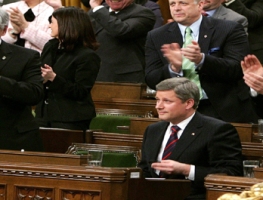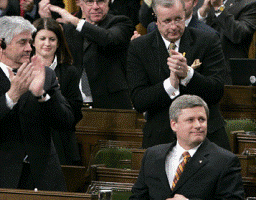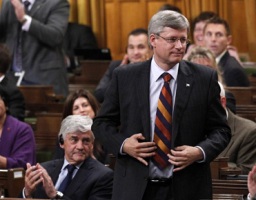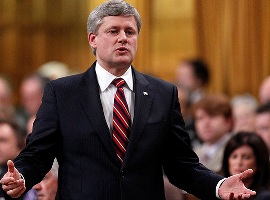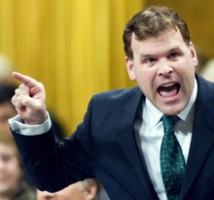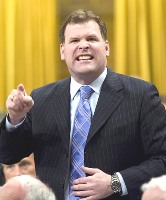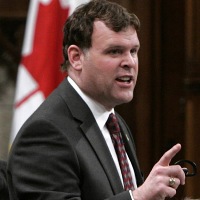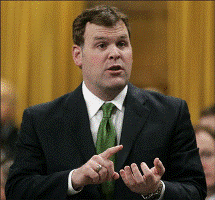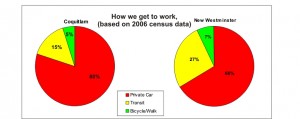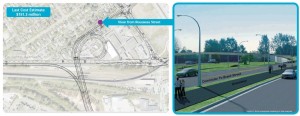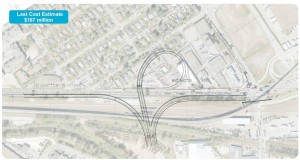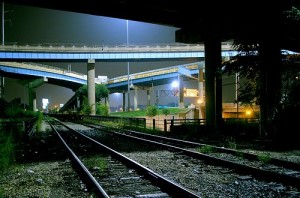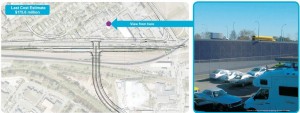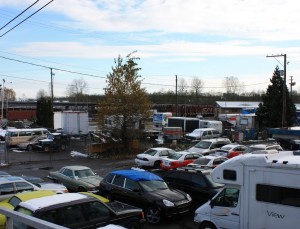Thanks to Matt Laird, you can all enjoy the video of Mondays’ UBE discussion at council. Now I’m making it easy to show how much I paraphrased. Note the twitchy, swarthy guy in the background behind Laird… he looks like a trouble-maker…
Once again, local rabble-rouser Matt Laird took his 5 minutes of allotted council time to keep the issue of the United Boulevard Extension out in front of council.
For those not paying attention, a motion came out of the Working Session on Monday, the essentially told Translink to come back with something better.
Long and short of it, Translink has again managed to put off the “deadline” for securing Federal funds for this project (proving once again that the “deadline” is more like a “justrestingline”), and will work with the City to see if they can find a solution to the Front Street part of the NFPR in time to make the UBE more tenable.
Contrary to some reports, this does not mean that the City has agreed to the UBE, only to keep their minds open and see what TransLink has to offer. This is (in my never humble opinion) the right tack to take. Lets not close our eyes to all offers, let’s see what they can come up with, then decide if the proposed solution improves out City.
The public opinion on this project is such that all 6 council members felt they had to comment on Laird’s delegation and the motion that went forward. For those who missed it, the entire session should be up by some time mid-week at Matt’s website: luther.ca/newwestcouncil. Here are my comments on their comments (of course, there comments are paraphrased from my notes at the meeting, please let me know if I mis-quote any of them!).
4:21, Councillor McEvoy: Is curious to see how Translink plans to improve traffic flow but not increase traffic volume.
This is a significant question, and perhaps cuts to the very heart of the matter. As anyone involved in transportation planning can tell you, traffic usually expands to fill the void. If we double traffic capacity on the NFPR, we can only expect traffic to double, resulting in an equal amount of congestion concomitant with increased noise, pollution, maintenance costs, etc. etc.
6:10, Councillor MacIntosh: Reminded us that the industrial area in Sapperton needs help, they are suffering from congestion and need to be able to move goods to survive. She also reminded us that the Federal Money being offered is intended to increase efficiency and safety of train operations (supported in this case by replacing a level crossing with an overpass). Finally, she made it clear the Translink will be evaluating various options, perhaps including a 2-lane bridge to replace the Bailey, or re-routing Braid industrial Area traffic through Coquitlam, where new road infrastructure is being built already.
These comments brought to my mind (as echoed by Laird), that the problem is commuter cars using our industrial roads as a shortcut, clogging them up so goods-carrying vehicles can not get through. Essentially, this is the same problem as “Rat Running” in the residential parts of Sapperton. It is not clear how this problem for our important industrial citizens will be solved by knocking down some of their businesses to make room for a road that will only serve to funnel more commuter traffic through the industrial area. This is suspiciously close to fighting fire with matches.
If the Feds and Railways have the goal of improving upon the level crossing, and the City’s goal is to make Braid Industrial Area more accessible, then these goals may not coincide with TransLink’s goal to build more roads and Coquitlam’s goal to improve traffic flow to the big box hell (and soon car-oriented development hell) that is United Boulevard.
10:39, Councillor Harper: Started by reminding us that this is a complex problem, and that there will not only not be a single answer, there is also not a single goal. He rhetorically asks if we have “address” truck traffic, then non-rhetorically answers in the affirmative. Harper seems to be the one most in favour of the existing offer from Translink, as he lists the issues relating to the existing situation on Brunette and Columbia, but he fails to close the loop on how any of these problems will be solved by the UBE (although he alludes to “mitigation”) or how building a 4-lane freeway amounts to “reclaiming out waterfront”. He finishes by questioning how long before we have another “opportunity” to get $65 million in Federal money to build our way out of this problem.
After my erlier comments about conflicting goals, I think all of Council should, at least, have a single goal: to make New Westminster a more livable, more prosperous, and more sustainable community. I look back at the Mayor’s annual address, and I see one goal laid out again and again: Make the City more livable. If there are any other goals here, let’s get them out on the table.
I’m not sure how one “addresses” truck traffic. The way I see it, we have three options: have more, have the same amount, or have less. The things that make any single truck safer, less polluting, or quieter are outside the City’s jurisdiction. All we really can control is the number or trucks, and we control that by building the infrastructure to accommodate them. You can argue that we need to build more capacity to accommodate more trucks, but don’t then complain about increased noise and pollution. You can argue that we need to reduce truck traffic, but if you do this, you had better be ready to work with our industrial and commercial citizens to make sure you don’t drive (ha ha) them our of business or to another jurisdiction. The third option is to not build more capacity. This will, of course, require you to do both: :mitigate the already significant pollution and noise issues, and work with our business partners to make the existing infrastructure more efficient for them. In many ways, this is the most difficult option, but might represent the best option for a City like New Westminster.
Finally, the $65 million is a red herring argument. That is not Federal Stimulus money, it is money earmarked for Asia-Pacific Gateway improvement. If New Westminster along with it’s partners at the railway, Translink, and the Province find a way to free up train travel and increase level crossing safety, the money will be there. This is separate from the entire idea that we must do something because “someone else” will pay for a portion of it. That is not really visionary, especially when that “someone else” is actually us, the taxpayer. If it serves the community and other levels of Government are willing to contribute (Pier Park anyone?), then great. But if it doesn’t serve us, we should be responsible enough to say no thank you.
17:25,Councillor Osterman: Recognizes the traffic problem as a problem, citing traffic by the Columbia Square and 20th Street as good examples: “the system needs work”. He agrees that we need the long-term plan in place before we spend money unwisely. He is also of the opinion that New Westminster (and potentially all of Greater Vancouver) is on the “cusp”, but I didn’t really get the idea of what cusp he was speaking of…after all, cusps can be the top of a wave, or they can be the edge of a cliff…
It is interesting that the traffic problems Osterman outlines (primarily, his own hassles commuting in a single occupant vehicle to the airport and back, and trying to get to Council on time) are likely to be made worse by the UBE, and worse yet if the full 4-lane NFPR is built on Front Street. These projects will just move the traffic choke point to his neighborhood.
I think (and hope) he meant the cusp where a larger investment directed at public and alternative transportation will be required to make our Cities livable over into the next Century. This is the time when we start to seriously move away from building transportation infrastructure based on the individual automobile and start building it based on the realities of Peak Oil, Climate change, and what type of City we want to live in 10, 20, 50 years from now. Osterman cited European examples, and I concur that northern Europe is full of amazing cities with enviable transportation systems: Amsterdam, Copenhagen, Oslo, even London.
Imagine…
21:50, Councillor Cote: Surprised me by mentioning that he did not support the motion, as he feels strongly that the Patullo Bridge question must be answered at the same time as the NFPR question, the two solutions must happen hand-in-hand, and with the Patullo decision delayed until the fall, that cannot happen.
I can see both sides of this coin. Yes, ideally, the entire system should be dealt with holistically (and, uh, is sort of required to under CEAA, but I digress). However, the Patullo decision might just be out of TransLink’s hands, as Premier Falcon is going to want to cut the ribbon on that one at the most opportune time. So if Translink can run the numbers with each of the three most likely Patullo upgrade outcomes (refurbishing the existing bridge; replacing with a 4-lane bridge; replacing with expanded capacity) then the City may have something that can be fairly evaluated. Now, Cote surely knows more than I about the plans, as he sat through the TransLink presentation, and I am hearing about it third hand, so I am not going to be critical of him for his principled stand.
24:50, Councillor Williams: Had little to say, but going 6th, most of it had already been said, but she reminded us once again that the City willing to agree to anything unless the entire NFPR routing is dealt with concurrently.
Overall, Council’s position on this remains clear. Although there is a spectrum of views from the Councillors, they all reflect different approaches to the same point: The UBE is part of the NFPR, and we, as a City, will not accept the piecemeal management of this major regional route through the City.
It will be interesting to see what comes back in June. With the City Engineers working on the project with TransLink, they are unlikely to come back without something they can recommend to Council. If Matt Laird’s suggestion that the physical limits at several locations along the proposed NFPR routes will preclude the 4-lane truck highway some dream about, then we might be in for quite a fight in June.
Just in time for an election campaign.
